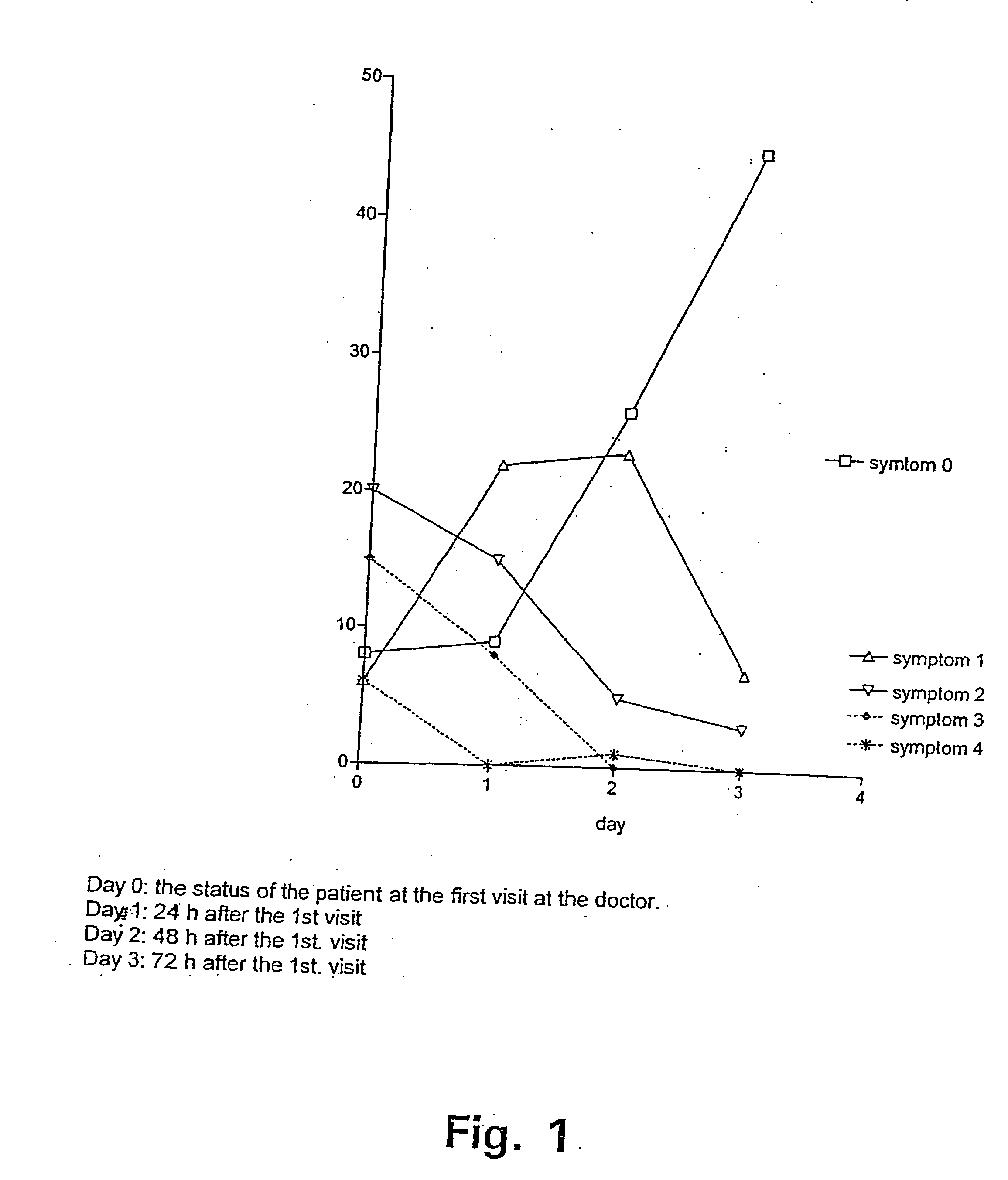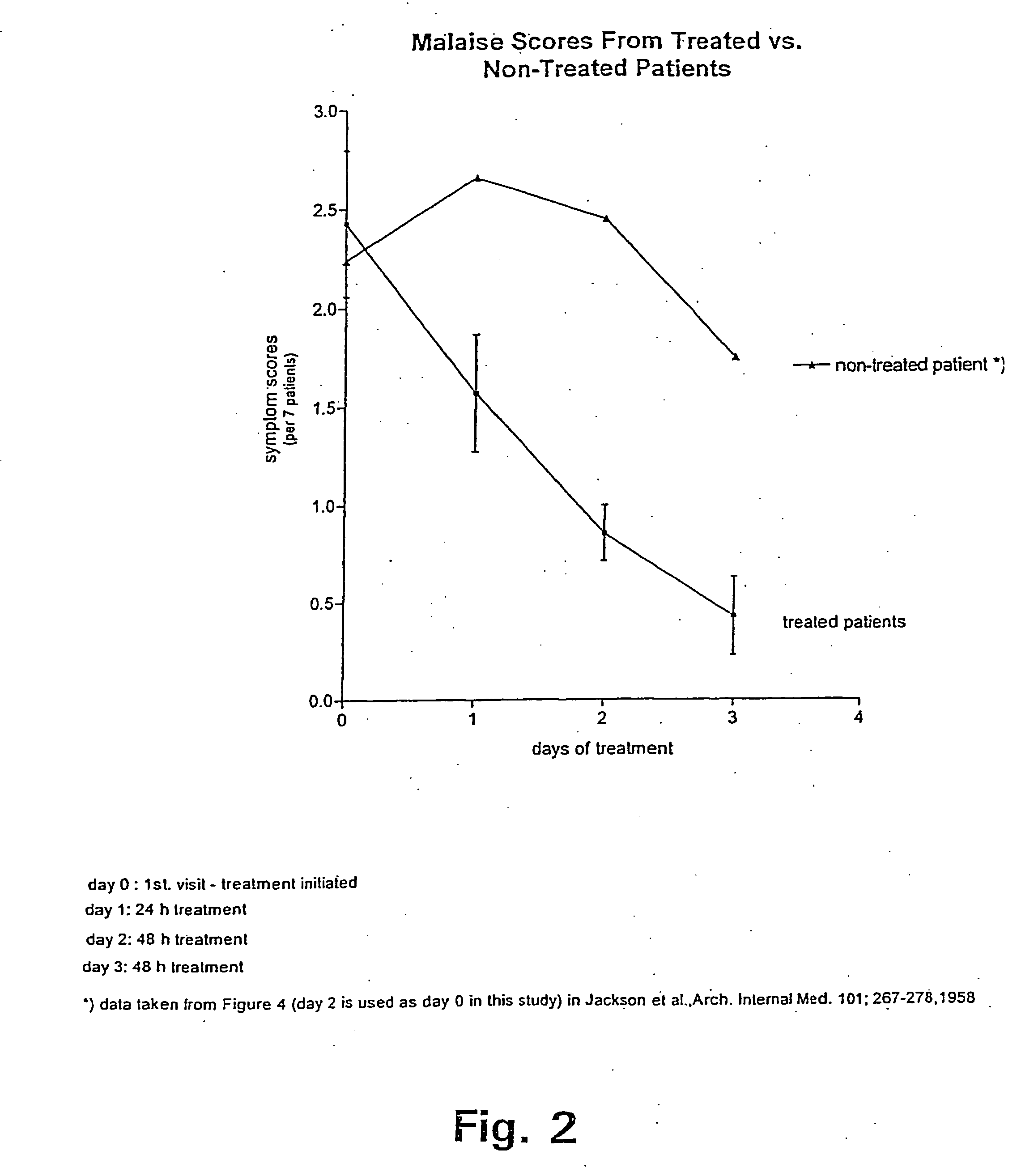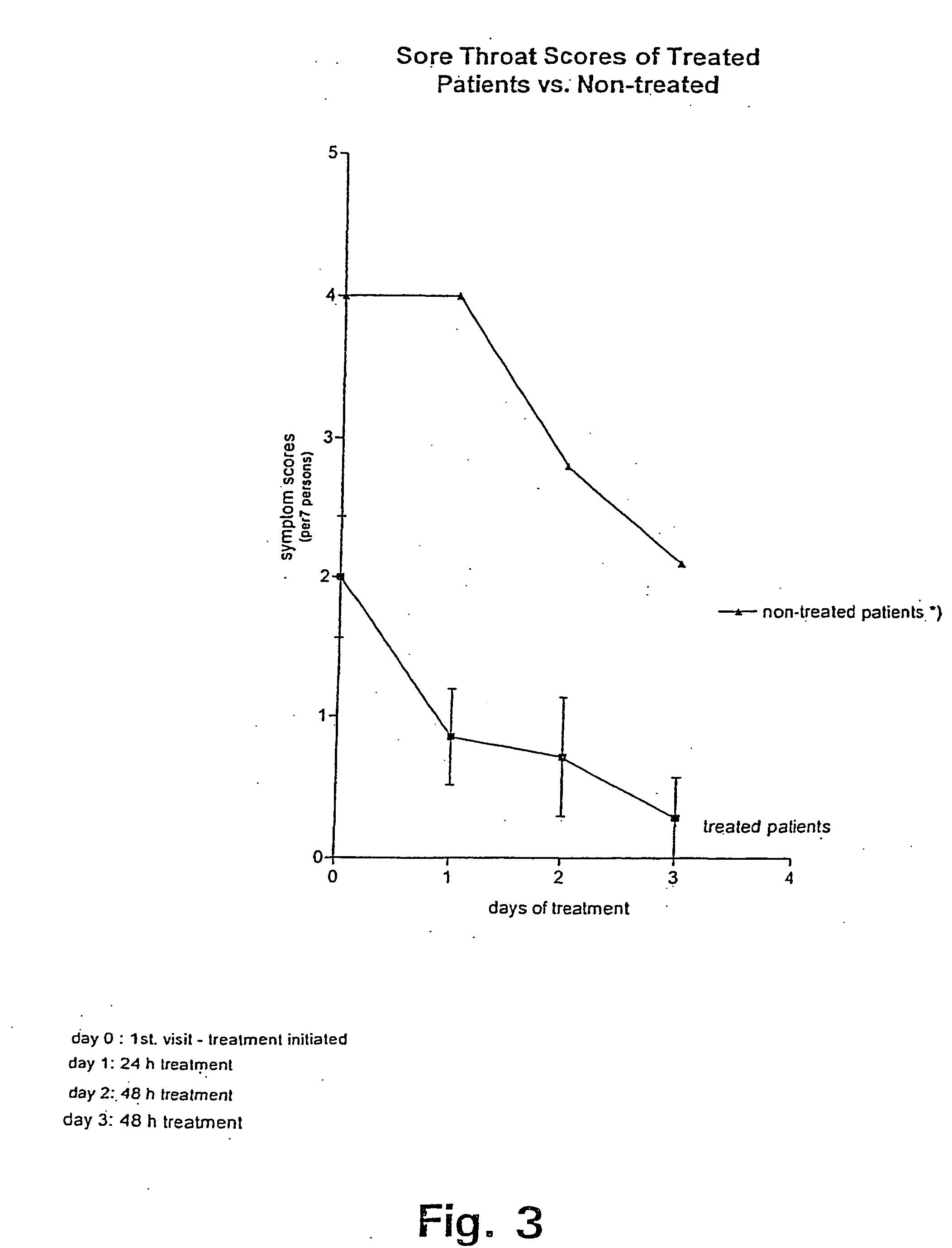Method of treating symptoms of common cold, allergic rhinitis and infections relating to the respiratory tract
a technology of allergic rhinitis and respiratory tract infection, which is applied in the direction of immunological disorders, antibacterial agents, peptide/protein ingredients, etc., can solve the problems of not providing a fast working and efficient composition for preventing and/or treating common colds, and the cold can be uncommonly disruptive, forcing otherwise normal persons to miss,
- Summary
- Abstract
- Description
- Claims
- Application Information
AI Technical Summary
Benefits of technology
Problems solved by technology
Method used
Image
Examples
example 1
[0158] Virus Titrations
[0159] Rhinovirus 1A, rhinovirus 15 and rhinovirus 39 were titrated according to the tetra zolium salt (MTS)-method (Berg et al., 1989; Berg and Owen, 2001a, Hansen et al., 1989). WISH cells were seeded in a micro tray at 3000 cells per well and incubated at 37° C., 5% CO2 overnight; the following morning the medium Was replaced with 10-fold dilutions of either rhinovirus 1A, rhinovirus 15 or rhinovirus 39, respectively, in fresh medium and the trays were incubated 4-5 days at 33° C.; a microscopical examination confirmed that the CytoPathogenic Effect (CPE) was fully developed (CPE equal to 100%). The minimal amount of virus (i.e.: the highest dilution of the virus in question) which produced 100% destruction was used as “challenge virus” in the subsequent experiments. To quantitate the CPE in terms of % destruction, MTS (Berg and Owen, 2001a) was added to all cultures and after 3 h incubation at 37° C. (without CO2) the trays were read in a scanner as previ...
example 2
[0160] No Antiviral Activity of ZnGluconate as Measured via the MTS-system.
[0161] WISH cells were seeded in wells in a microtray and incubated for 24 h at 34° C., 5% CO2; the medium was replaced with fresh medium comprising 2-fold dilutions of ZnGluconate (diluted 1:10 from a 1% stock dilutions) and incubated further for 3-4 days at 33° C., 5% CO2; on the following day challenge virus was added and after 3-5 days at 33° C., 5% , CO2, MTS was added and the microtray was measured in an OD-scanner (Berg et al., 1989; Hansen et al., 1989). Alternatively, instead of ZnGluconate WISH cells were incubated with other zinc salts / complexes or with the flavonoid derivatives, Troxerutin, Veneruton® or Quercetin.
[0162] No substantial protection against rhinovirus by addition of ZnGluconate could be detected (<2% protection). The OD signals from the wells, that were incubated in the presence of ZnGluconate were very close to the virus control curves (FIG. 7). Similar results were observed when ...
example 3
[0163] Antiviral Activity of Interferon-α (rHuIFN-α-2b) Against Rhino Virus (1A, 15 or 39).
[0164] 3.000 WISH cells were seeded in a microtray and on the following morning, the medium was replaced with 2-fold dilutions (from a 0-30 units / ml stock solution) of HuIFN-α-2b (Intron A) in fresh medium comprising 2% serum. After incubation overnight, the medium was replaced with fresh medium comprising challenge virus and incubated at 33° C., 5% CO2 for 3-5 days and processed further as described in Example 2.
[0165] The results in FIG. 7 clearly demonstrates that rhinoviruses are reasonable sensitive to HuIFN-α-2b (50% protection). However, 90-100% protection can be achieved at approx. 8-15 units / mil.
PUM
| Property | Measurement | Unit |
|---|---|---|
| particle size | aaaaa | aaaaa |
| concentrations | aaaaa | aaaaa |
| time | aaaaa | aaaaa |
Abstract
Description
Claims
Application Information
 Login to View More
Login to View More - R&D Engineer
- R&D Manager
- IP Professional
- Industry Leading Data Capabilities
- Powerful AI technology
- Patent DNA Extraction
Browse by: Latest US Patents, China's latest patents, Technical Efficacy Thesaurus, Application Domain, Technology Topic, Popular Technical Reports.
© 2024 PatSnap. All rights reserved.Legal|Privacy policy|Modern Slavery Act Transparency Statement|Sitemap|About US| Contact US: help@patsnap.com










